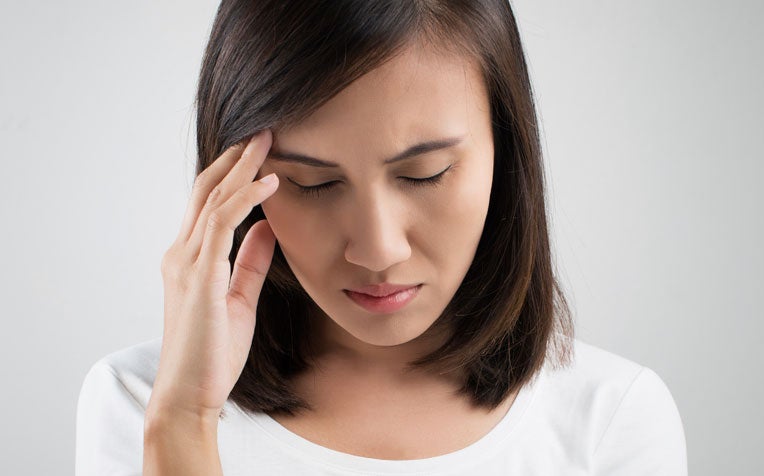
Perimenopause refers to the period leading up to menopause, which can be a trying time for women.
Menopause, which is defined by the occurrence of the last menstrual period followed by 12 months without menses (also called amenorrhea), usually occurs at about 50 years of age or thereabouts. It is during period leading to menopause, the so-called perimenopause transition when the female reproductive hormones are changing, that women are particularly vulnerable to emotional disturbances.
This transitional period can last for a varying duration from a few months to a few years. Because mood disturbances related to menopause are common, and many women are aware of this condition, it is often believed that it is “normal” for women to be depressed as they enter menopause.
"Perimenopausal depression is not normal, as is true for depression at any time in a woman’s life, and an afflicted woman should seek medical attention to help her regain emotional stability," said Dr Helen Chen, Head and Senior consultant at the Department of Psychological Medicine, KK Women's and Children's Hospital (KKH), a member of the SingHealth group.
Signs and symptoms of mood disturbance during perimenopause
Whilst minor mood swings, insomnia and hot flushes are common during perimenopause, for some women, the symptoms of low mood can be severe, with accompanying symptoms of
- poor sleep,
- poor appetite,
- loss of interest,
- loss of concentration,
- negative thoughts,
- excessive self-blame, and even
- suicidal feelings.
If a woman experiences these symptoms for two weeks or more, then she is likely to be suffering from clinical depression which will require treatment. Research has found that possibly up to 20 per cent of perimenopausal women suffer from depression of varying severity.
A significant proportion of perimenopausal women also experience anxiety symptoms such as tension, excessive worrying, panic attacks, breathlessness and palpitations. Other common symptoms of anxiety are the urge to pass urine, sweating spells, tremulousness and insomnia.
What causes a woman to develop perimenopausal depression and anxiety?
It often is the interplay of many factors, rather than just hormonal factors alone that causes a woman to develop perimenopausal depression and anxiety. Otherwise, every woman would experience depression as she transitions to menopause.
Rather, the hormonal changes present as a vulnerability so that in the face of other stressors, the woman develops depression. Oestrogen is protective of our mood state, by interacting with brain pathways that affect our mood, so that with dropping oestrogen levels seen in perimenopause, mood changes can develop, as can physical changes. This also explains why when eventually oestrogen levels plateau at a stable low state after menopause, women tend to experience an improvement in their symptoms.
Some of the factors that can contribute to the development of mood changes and anxiety include:
- Physical climateric symptoms – for some women the hot flushes and insomnia can be distressing and can affect their mood. This is explained in the so-called domino theory – the hot flushes are distressing especially at night, leading to sleep disturbance, and therefore affect the mood.
- Psychological issues – for some women menopause represents the end of their reproductive functioning, or a change in their sense of womanhood – for these women there is sadness, insecurity and depression.
- Social issues – for other women, there are accompanying mid-life changes, such as the children growing up, and leaving home – the so-called “empty nest syndrome”. This is particularly difficult for women who are facing marital difficulties, especially if they have spent their lives focusing on their children so that they have grown estranged from their husbands.
For single women, it may be difficult dealing with the notion that they are soon entering into old age, and then the fear of loneliness. For career women, stress may also come from changes in the workplace that may be coinciding with perimenopause – perhaps a younger boss, or being made redundant because of advancing age.
Who is at risk of developing perimenopausal depression?
Women who are particularly at risk of developing perimenopausal depression include:
- Women who have a past history of depression
- Women who have suffered from postpartum depression (depression after childbirth)
- Women who have suffered from premenstrual depression (known clinically as premenstrual dysphoric disorder)
However, there are also some women who develop depression for the first time in their lives during this period.
What are the recommended treatment options for perimenopausal depression?
Treatment of perimenopausal depression should be individualised for each woman, with a combination of different approaches as is appropriate for her. The approaches include:
Medication – With the recent concerns regarding the use of hormonal replacement therapy (HRT), antidepressants are recommended as a first line treatment for the management of perimenopausal depression, especially as they are relatively safer than HRT.
Experts generally recommend antidepressants which work on brain serotonin pathways, as this controls our mood state. These medications include the serotonin reuptake inhibitors (SSRI), such as Sertraline, Fluvoxamine, Paroxetine and Escitalopram. Other medications that are helpful include Mirtazepine and Venlafaxine.
Many of these medications also have anti-anxiety effects, which are beneficial to women suffering from perimenopausal depression, as anxiety features are common too. Recent research has also demonstrated an improvement in hot flushes with Escitalopram.
- Therapy – Psychological support, therapy and counselling are important for women suffering from depression, and there is a variety of formal therapies that have been studied and found to be effective, such as cognitive behavioural therapy and interpersonal therapy.
Apart from individual therapy, marital therapy or marital counselling, or even family therapy may be helpful for women who are facing marital or family difficulties that may be contributing to their depression. - Social intervention – For some women, financial problems may be a significant factor in the development of their depression, and this needs to be addressed, and appropriate help or referrals to community resources may be beneficial. Other concerns may be perhaps related to difficulties caring for elderly parents, and again, referral to appropriate resources may be helpful.
- Stress management and relaxation – the usual techniques to handle stress, and relaxation methods can do much to alleviate stress levels that may be contributing to perimenopausal depression. Studies have shown that exercise, mindfulness practice and relaxation techniques can do much to improve mood and anxiety symptoms.
Even traditional forms of exercise and relaxation such as yoga and qigong can be beneficial in relieving stress. Participating in activities that can uplift the spirit, for example, art and craft, will also be beneficial in helping women navigate the emotional journey of the menopause transition.
Ref: O18
Contributed by


















 Get it on Google Play
Get it on Google Play